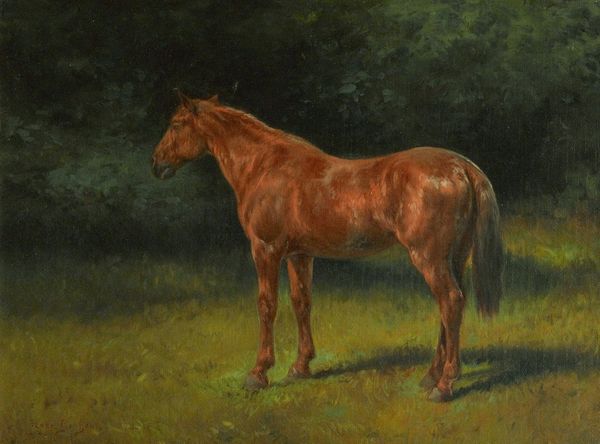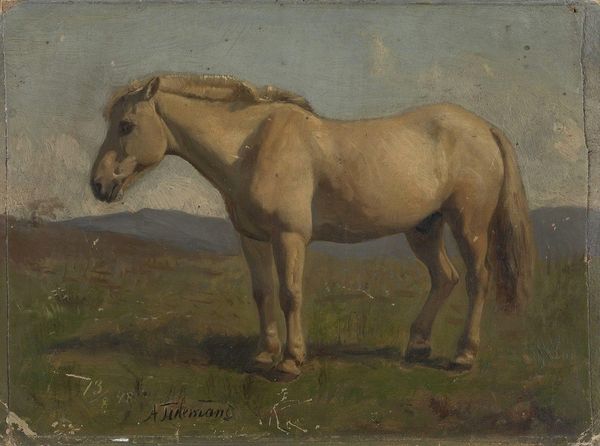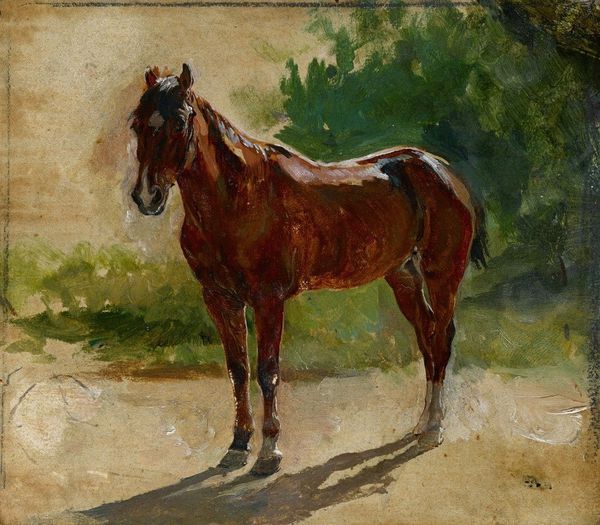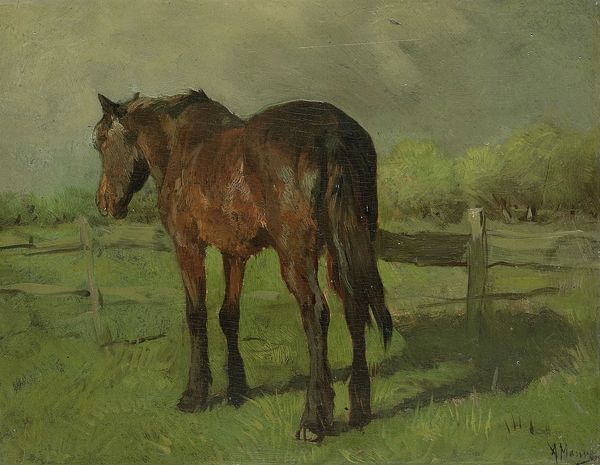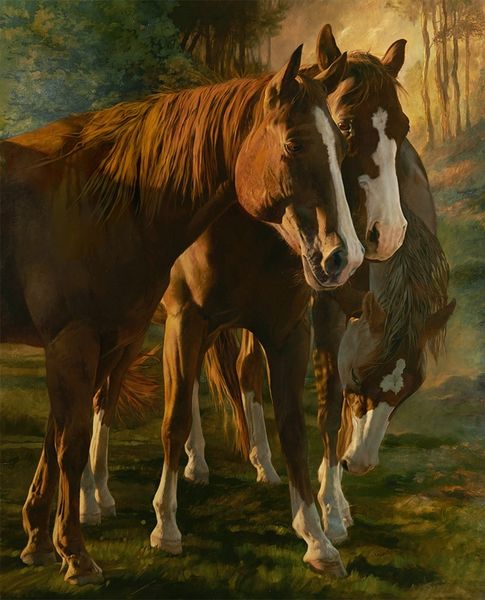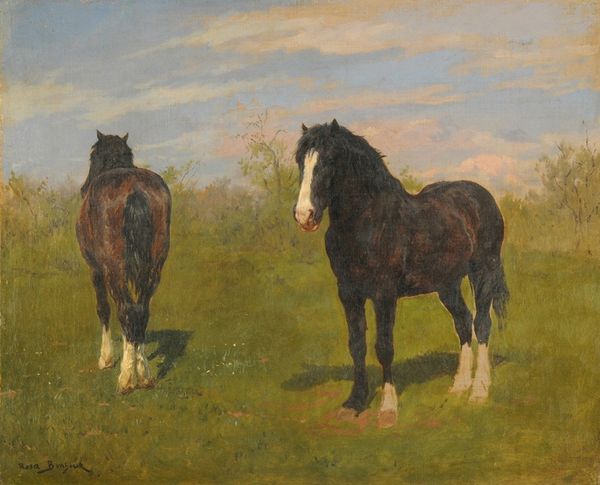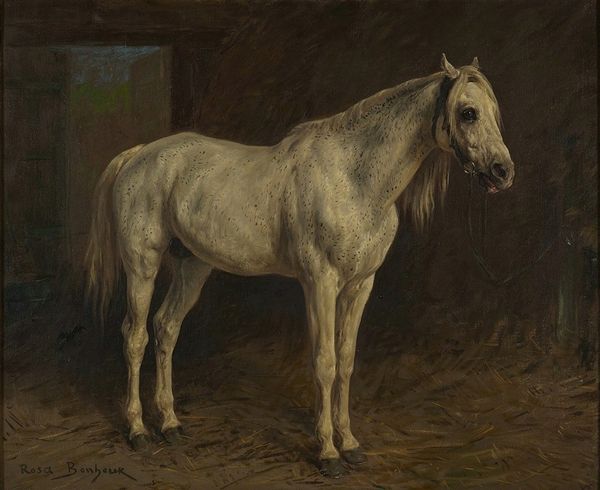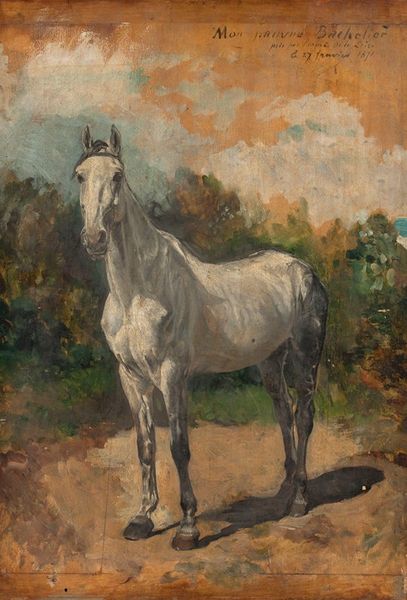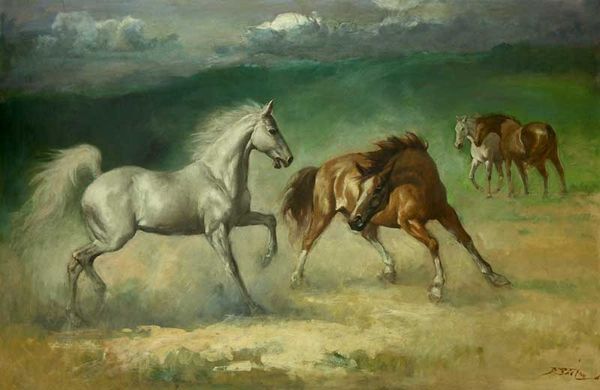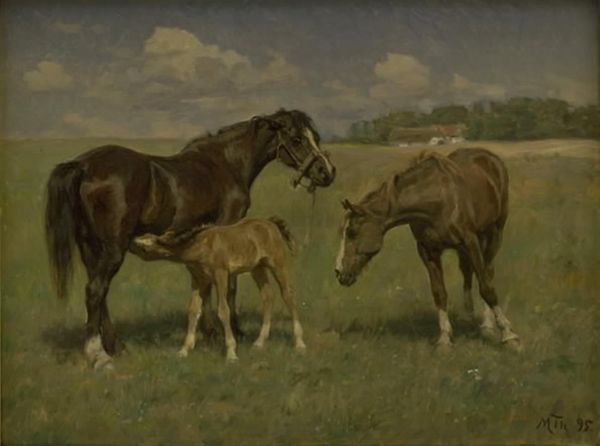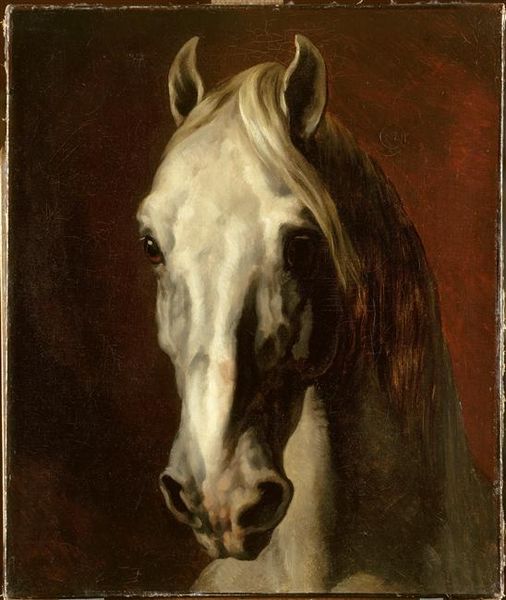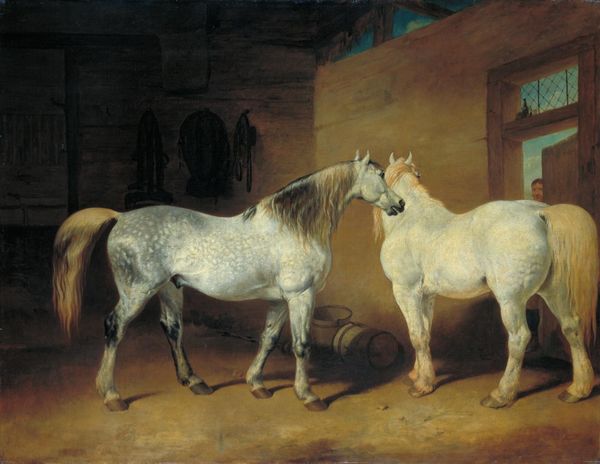
painting, plein-air, oil-paint
#
animal
#
painting
#
plein-air
#
oil-paint
#
landscape
#
figuration
#
oil painting
#
romanticism
#
realism
Copyright: Public Domain: Artvee
Curator: Looking at this small oil painting of "Two Horses" by Albert Bierstadt, there is this interesting quality to the way the light captures their forms. One, mostly auburn with splatters of white, is boldly staring at us while the other behind appears to be turned away or lost in thought. It's a piece filled with potential narratives, don't you think? Editor: They’re so placid, really. These figures evoke the 19th-century fascination with domestication and how animals reflected human aspirations. The landscape format emphasizes this taming. But look at the brushstrokes—almost impatient. Does this gesture also show the tension in colonial landscape expansion? Curator: Well, in this instance, I find this almost subdued use of colors very fascinating and it evokes calmness as if the day is uneventful. It allows the viewers to appreciate how the artist captured them in a very normal and relaxed stance instead of them being startled by something which could potentially make it a far more different depiction of the majestic animals. Editor: Right. The animals are rendered with detail but set against an abstract background. In this work, you see Bierstadt testing the relationship between accurate animal portrayal, artistic brushwork, and his grander statements on American life. And those contrasts raise questions about ownership, freedom, and control. Curator: Exactly, that kind of duality is what makes Bierstadt so great! He lets us observe not only horses but also maybe reflections of ourselves: what we tame versus what we let run wild within us! The shadows and contrasts aren’t just light playing off muscles, but maybe the unspoken dialogue of the American experience? Editor: Ultimately, these horses, posed in that simple field, become part of Bierstadt’s larger commentary. Here he subtly uses a snapshot to explore themes of settlement and civilization, as well as art making, that defined 19th-century art in the US. Curator: Yes, which I think helps open ourselves to finding and feeling those threads, both delicate and powerful. It truly takes the familiar and whispers a bigger, wilder story. Editor: Precisely. And in considering those whispered narratives, we also have to look at the socio-political currents underpainting these simple depictions. It becomes layered.
Comments
No comments
Be the first to comment and join the conversation on the ultimate creative platform.
